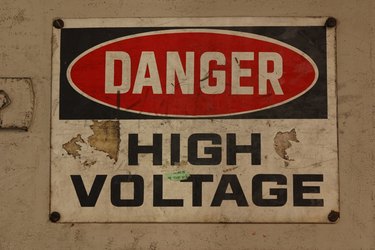
Connecting the wrong power supply to your pool pump can result in serious damage. Using an 110v connection on a pump that requires a 220v supply can result in your pump running slowly or not working at all. Applying a 220v supply to a pump that needs an 110v input could damage your unit beyond repair. If you're fitting a new pump or repairing an old one, it's vital that you establish the correct voltage before connecting a power supply.
Step 1
Examine the information label on the housing of your pump to find the correct power supply. The majority of modern pumps feature a panel displaying the unit's specification and model number on the casing. You should be able to find the voltage of your pump here.
Video of the Day
Step 2
Consult the user manual and packaging that came with your pump. If you can't find an information label on your pump's housing, or if it's become too worn to decipher, find the original packaging and instruction leaflet that originally came with your unit. This should contain information on the voltage you'll need to apply.
Step 3
Gather as much information about your pump as you can. In the absence of an information panel or any original packaging or paperwork, look for serial numbers etched into the body of your pump or any unusual features. You can then contact your pump's manufacturer or the retailer that sold it to you for assistance.
Tip
You can test the voltage of your power supply with a volt meter.
Video of the Day